Christie´s London presents
Becoming Senna
The Most Iconic Piece of F1 & Senna Memorabilia
Beyond a few personal items—often difficult to authenticate—it is primarily his autographs that collectors worldwide seek. Ayrton Senna wrote very few letters; only two or three are known to exist, apart from those preserved by his family in Brazil, which will never be sold. None, however, are as long and detailed as these. This collection includes 25 extraordinary pages that immerse us in Senna’s thoughts and reflections, revealing his obsession with race strategy and technical mastery, illustrated by truly remarkable technical sketches. Quite possibly the finest piece of Formula 1 memorabilia ever offered.
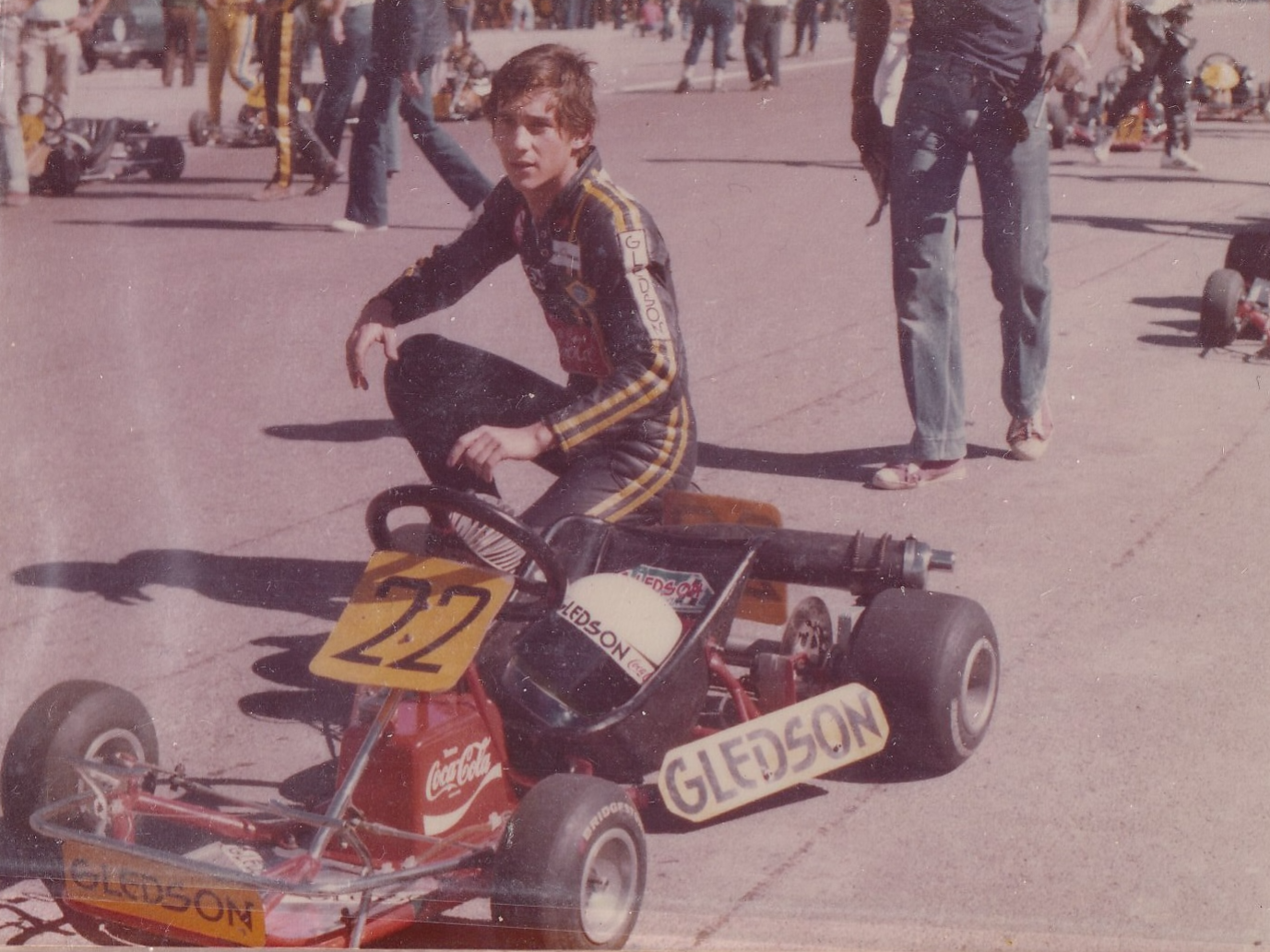
Ayrton Senna at 19 years old, unpublished standard color photograph, Bolivia, 1979.
Reproduction is prohibited without prior authorization.
The greatest Ayrton Senna memorabilia, 25 pages of pure insight into the mind of the brazilian legend
In Letter 1 – Montreux, May 14, 1979, Senna describes the testing of innovative water-cooled kart engines in Italy. He provides technical data, explains performance differences, and includes two mechanical sketches. The letter reveals his early obsession with precision and his belief that this engine technology could revolutionize karting.
In Letter 2 – Milan, June 11, 1979, Senna recounts a series of difficult races marked by mechanical problems, strategic decisions, and high-level competition. He reflects with clarity and detail, showing his determination to improve and offering a glimpse into the mind of a young racer already thinking like a future world champion.
Nothing could be more meaningful to collectors of Ayrton Senna autographs.
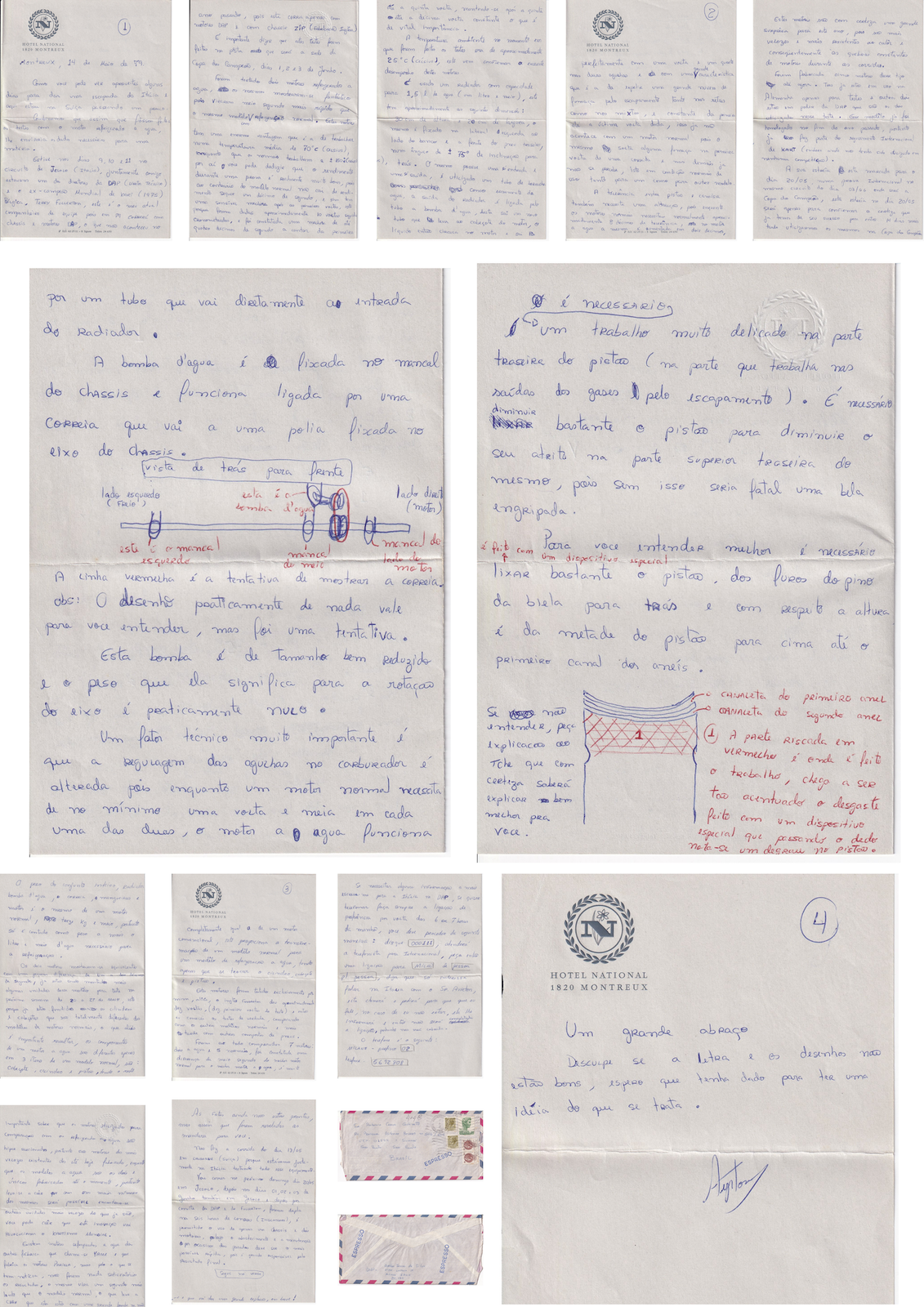
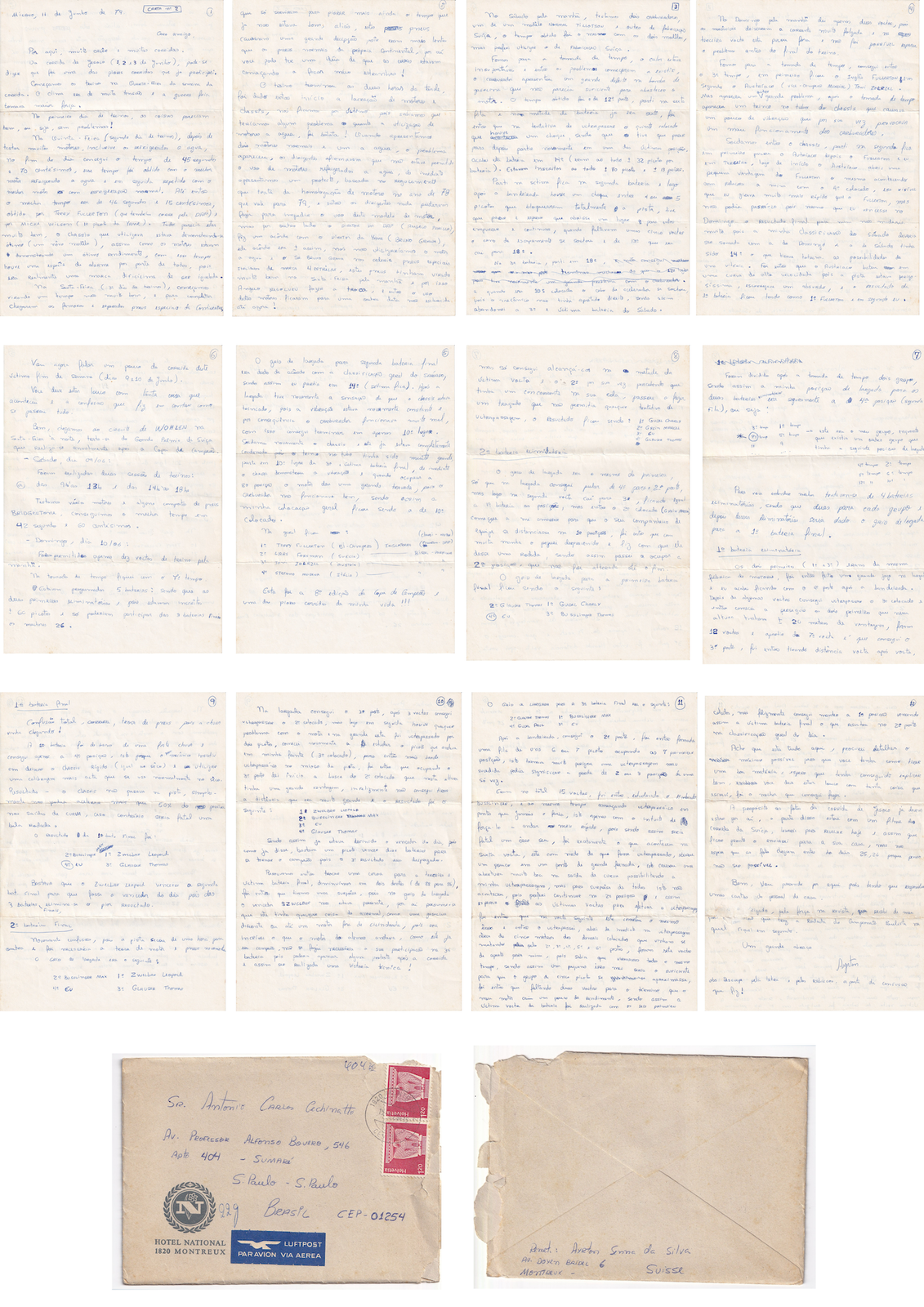
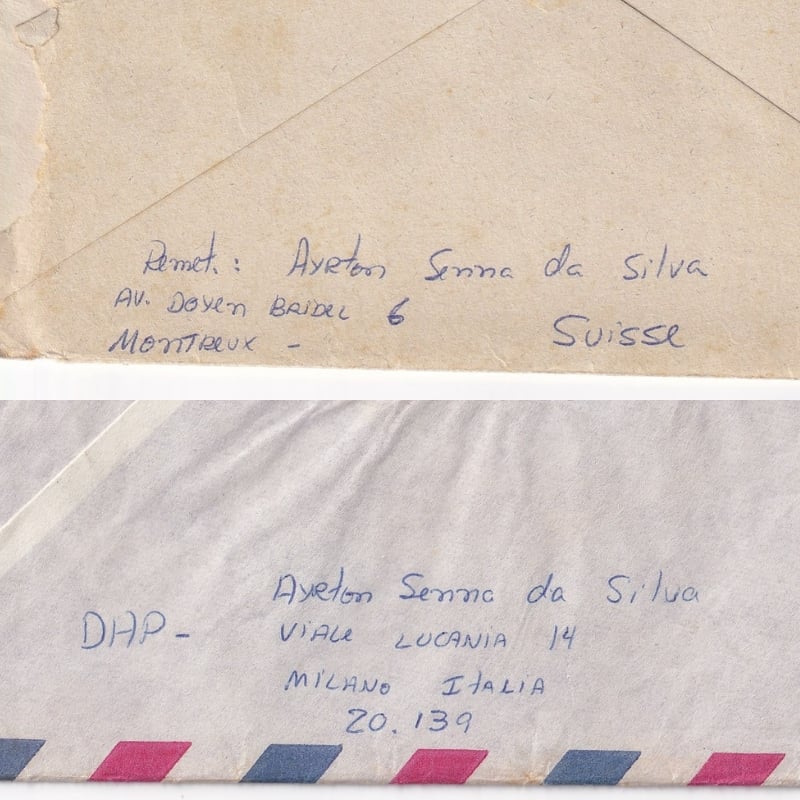
Two envelopes that are, on their own, remarkable pieces of Formula 1 signed memorabilia.
In Switzerland and Italy, Senna on his path to Formula 1, autographs even on the envelopes
In 1979, Ayrton Senna was in Europe with a clear and ambitious goal: to prepare for a professional racing career and ultimately reach Formula 1. At just 19 years old, he immersed himself in the elite world of international karting, competing on top circuits in Italy and Switzerland.
This period was not just about racing; it was about learning, adapting to European standards, mastering every mechanical detail, and proving that he could compete — and win — against the best drivers in the world. It was the foundation of a legend in the making.
Autograph letter signed by Ayrton Senna,
dated may 14, 1979, 13 pages (Montreux)
Written from Switzerland, this letter details the extensive testing of a revolutionary water-cooled engine for the time. Ayrton provides an in-depth description of the technical advantages of this engine, particularly its ability to maintain a low operating temperature, thereby enhancing performance and reliability.
These tests took place at the Jesolo circuit in Italy, with the presence of Terry Fullerton, a former world karting champion, and technicians from DAP, the brand Senna was collaborating with.
This letter showcases Senna’s meticulous and technical approach, as he compares various engines and configurations to optimize his performance in preparation for the Copa dos Campeões in June 1979. In this letter, he also included two incredible technical drawings to better explain his work to Antonio.
Without a doubt, the ultimate piece in any Ayrton Senna autograph collection.

An example, the 3rd page, out of a total of 13 pages.
Reproduction is prohibited without prior authorization.
Selected Quotes of the 1st letter
Ayrton Senna was Brazilian, the letters were written in Portuguese, and these quotes have been translated into English.
I was at the Jesolo circuit (Italy) on the 9th, 10th, and 11th. With me were one of the directors of DAP (the Technical Director) and the former world karting champion (1975), Belgium’s Terry Fullerton. He is my current teammate, as in ’79 he will race with both DAP chassis and engines, which wasn’t the case last year — he used DAP engines but ZIP chassis (made in England).
Ayrton Senna
Two water-cooled engines were tested. They proved to be fantastic, running half a second faster than the same model with conventional cooling. These engines have a major advantage: they operate at an average temperature of 70 degrees Celsius, while standard ones run at around 150 degrees.
Ayrton Senna
These engines were tested exclusively by me. In fact, the Englishman Fullerton did about ten laps (the first ten laps of the test), and then I began the real testing, comparing them with other standard engine models and, later on, with different tire compounds.
Ayrton Senna
Therefore, these are among the fastest engines ever manufactured to date. Meanwhile, the water-cooled models are the only two that have been produced so far. This suggests that with a larger number of units, it may be possible to find even faster ones than those already tested. You can believe that this innovation is going to revolutionize the world of karting.
Ayrton Senna
I will race next Sunday, May 20th, in Jesolo. Then again on June 1st, 2nd, and 3rd, also in Jesolo. After that, by invitation from DAP and Fullerton, we will team up for the Six Hours of London (England). Only one chassis and two engines are allowed, so refueling and maintenance during pit stops must be as fast as possible, as they play a major role in the final result.
Ayrton Senna
Sorry if the handwriting and drawings aren’t great. I hope they still give you an idea of what this is about..
Ayrton Senna
Two incredible mechanical drawings by Senna — the only known ones from the driver, a unique F1 memorabilia
Among the 25 handwritten pages, Ayrton Senna included two remarkable technical sketches, drawn by his own hand. The first illustrates the setup of a water-cooled kart engine, detailing the radiator, water pump, rubber tubing, and drive belt system. Senna annotated the drawing himself, attempting to show the direction of circulation and the pulley connection.
The second drawing focuses on the rear of the piston, explaining a delicate machining operation required to reduce friction and prevent engine seizure.
These are not mere doodles — they are engineering notes by a 19-year-old who was already obsessively optimizing performance. Together, they offer a rare glimpse into Senna’s mechanical mindset and uncompromising attention to detail. An absolute Formula 1 memorabilia must-have.
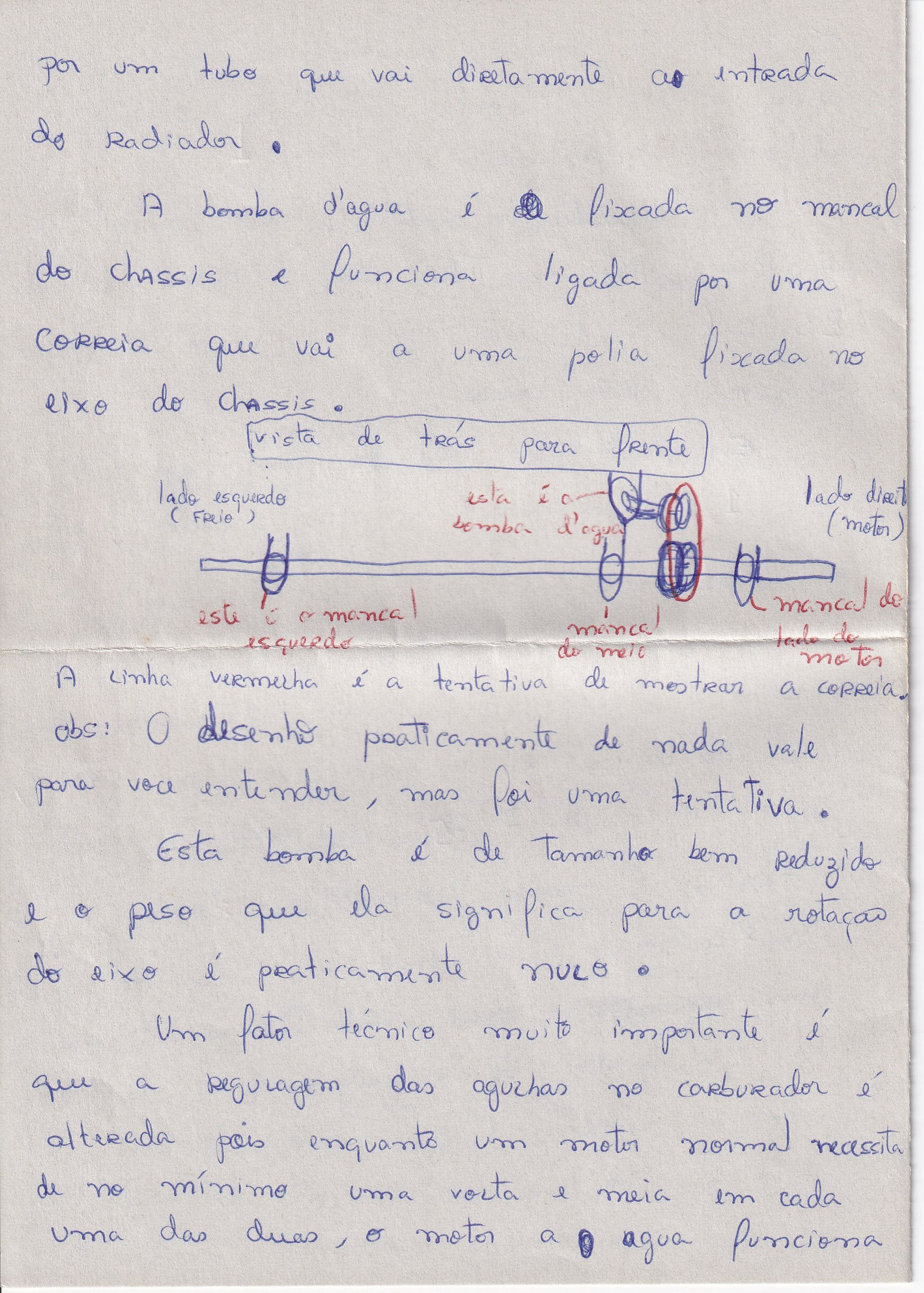

The two mechanical drawings included in the first letter.
Reproduction is prohibited without prior authorization.
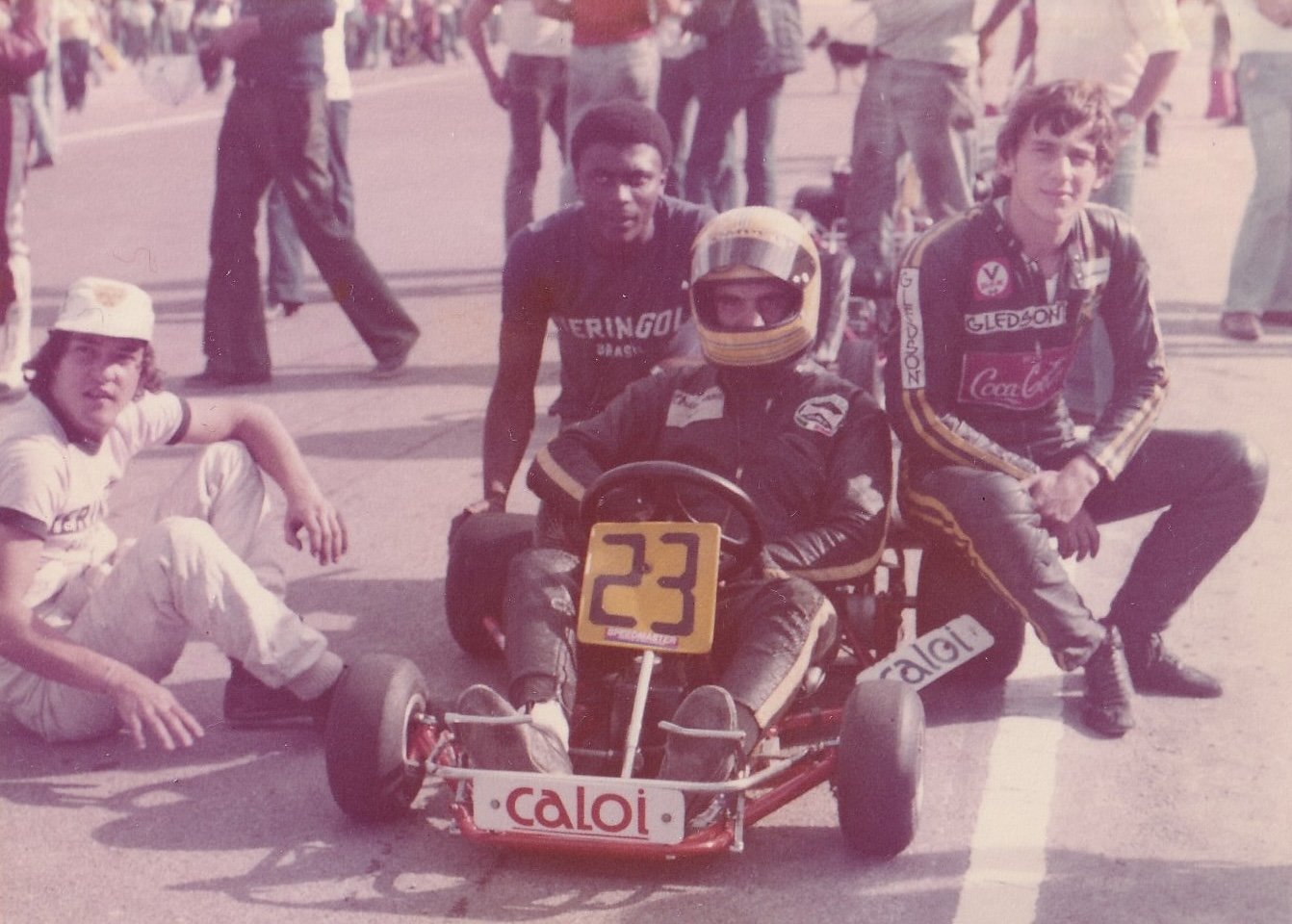
1979, Senna prepares for Formula 1
From the age of 13, Ayrton Senna stood out in karting, becoming South American champion in 1977. In 1978, he joined the DAP team in Europe, where he competed against renowned drivers such as Terry Fullerton, whom he regarded as his most formidable rival. Vice-world champion in 1979 and 1980, Senna excelled through his precision, strategy, and technical involvement. These formative years shaped his resilience and competitive spirit, laying the foundation for the legend he would become in Formula 1.
Autograph letter signed by Ayrton Senna,
dated june 11th, 1979, 12 pages (Milan)
Written after the Champions´Cup, this letter recounts a challenging experience during a major competition at the Jesolo circuit. Senna details the difficulties faced: mechanical issues (a faulty carburetor, a cracked chassis), race incidents, and tensions over regulations concerning water-cooled engines.
Despite these obstacles, he demonstrates resilience and his ability to analyze each situation to improve. This strengthened his mechanical understanding and his ability to collaborate with engineers, skills that would prove crucial in his Formula 1 success.
The letter also mentions another race, the Swiss Grand Prix, where he showcased his perseverance by winning a heat despite difficult weather conditions and intense competition.
This letter is the most incredible piece of Ayrton Senna memorabilia you could ever own.
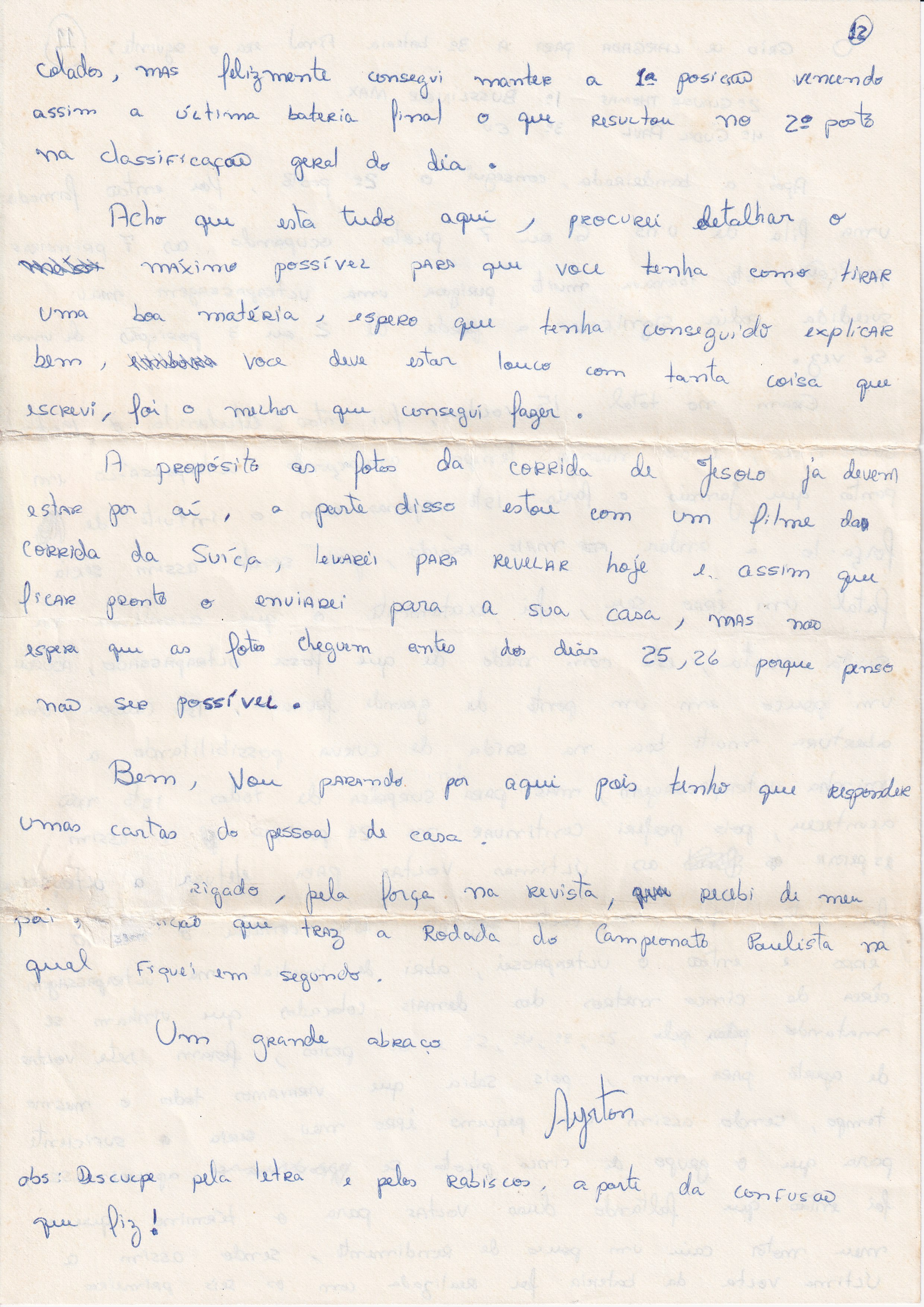
An example: the 12th and final page, out of a total of 12 pages, with Senna’s signature.
Reproduction is prohibited without prior authorization.
Selected Quotes
Ayrton Senna was Brazilian, the letters were written in Portuguese, and these quotes have been translated into English.
It’s been very hot around here, with lots of races. As for the Jesolo race (June 1st, 2nd, and 3rd), I can say it was one of the worst races I’ve ever taken part in. We began practice on the Wednesday of race week. The atmosphere was very tense, and the cold war between teams was intensifying.
Ayrton Senna
I qualified in 12th place. I started from the sixth row and by mid-race I was already in sixth. Then, while attempting to overtake the fifth-placed driver, there was a collision. I had to stop and restart from one of the last positions. I finished that race in 14th place (there were around 32 drivers per heat). In total, about 70 drivers were registered, representing roughly 13 countries.
Ayrton Senna
The result of the first heat had Fullerton in first place and me in second.
Ayrton Senna
After a few laps, I managed to overtake the third-placed driver and began chasing the two leaders, who at that point had about a 20-meter advantage. It was a 12-lap race, and by the 7th lap, I had secured 3rd place. I closed the gap lap after lap, but only caught up to them halfway through the final lap. The second-placed driver, realizing I was right behind him, started taking a racing line that made any overtaking attempt impossible.
Ayrton Senna
The race consisted of 15 laps. I was studying the leader, Busslinger, while also pretending to overtake him in places where I had no intention of doing so — just to pressure him into driving faster. That kind of pressure is often enough to force a mistake. And that’s exactly what happened on lap six. Afraid of being overtaken, Busslinger pushed too hard in a high-speed corner and ran wide on the exit, giving me the opportunity to pass. However, to everyone’s surprise, I chose to stay in second place, waiting for the final laps to make a safer overtaking move..
Ayrton Senna
On the following lap, Busslinger made the same mistake, and that’s when I overtook him. I opened up a gap of about five meters from the other drivers, who were fighting hard for the positions behind. The last seven laps were very tense for me, as everyone was lapping at similar times. A small mistake would have been enough for the group to catch me..
Ayrton Senna
Senna loved karts more than F1
In these two letters, Ayrton Senna illustrated what he often emphasized: that karting taught him everything he needed for Formula 1. He once stated, “I started racing go-karts, and I love karts. It’s the most breathtaking sport in the world. More than F1, indeed, I used to like it most.” That’s why this complete set stands out as a truly exceptional piece of F1 memorabilia.

A never-before-seen visual archive, a truly unique piece of Ayrton Senna memorabilia
This collection includes 25 unseen photographs, 24 of which feature Ayrton Senna on karting circuits. It comprises two color photo albums (4,84” × 3,54”) and four black-and-white photographs (9,45” × 7,48”). These photographs were taken by Antonio, Ayrton Senna’s close friend, during the Pan-American Karting Championship in La Paz, Bolivia, in 1979. This photo archive is a truly special piece of Formula 1 memorabilia.
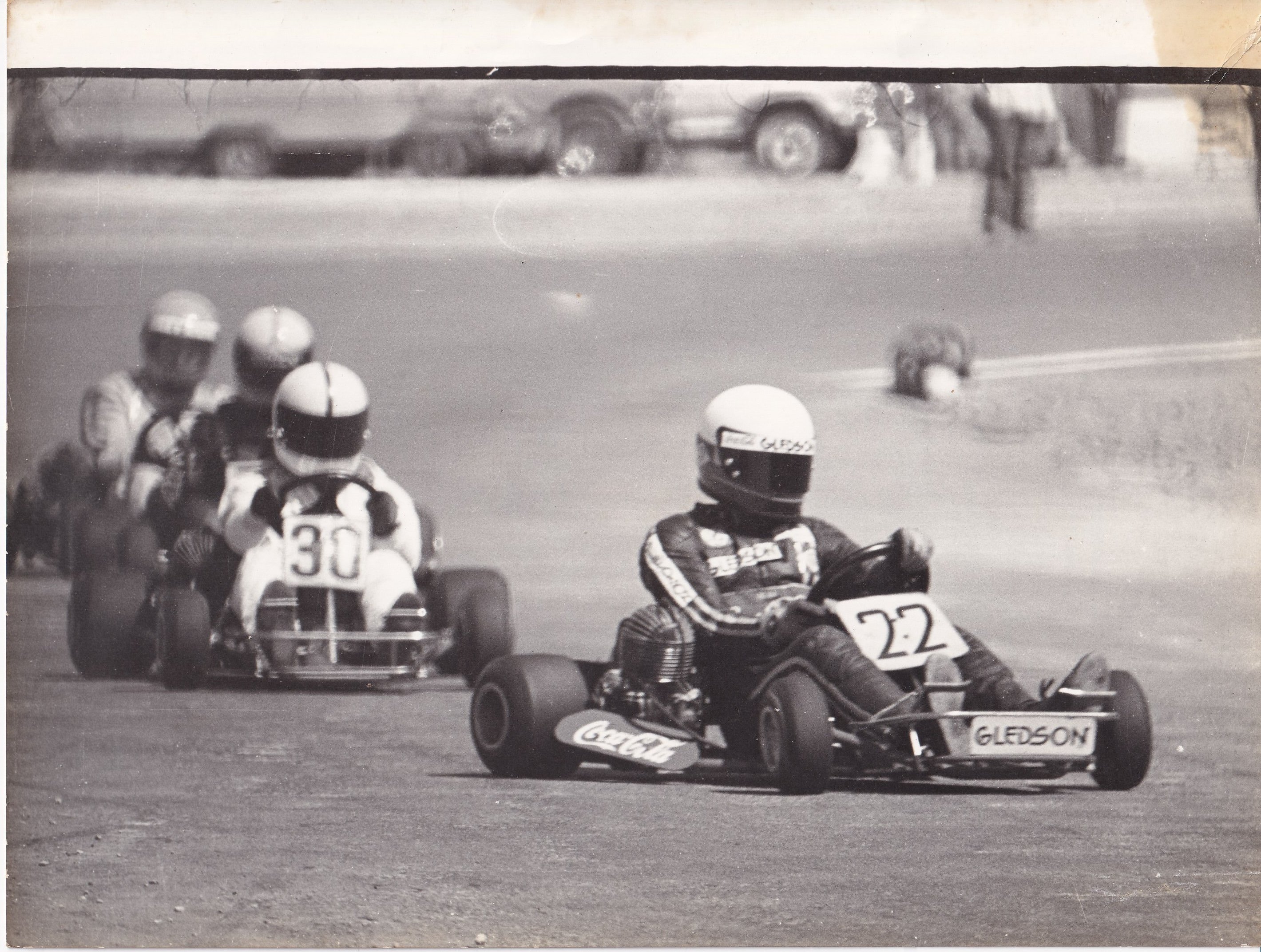

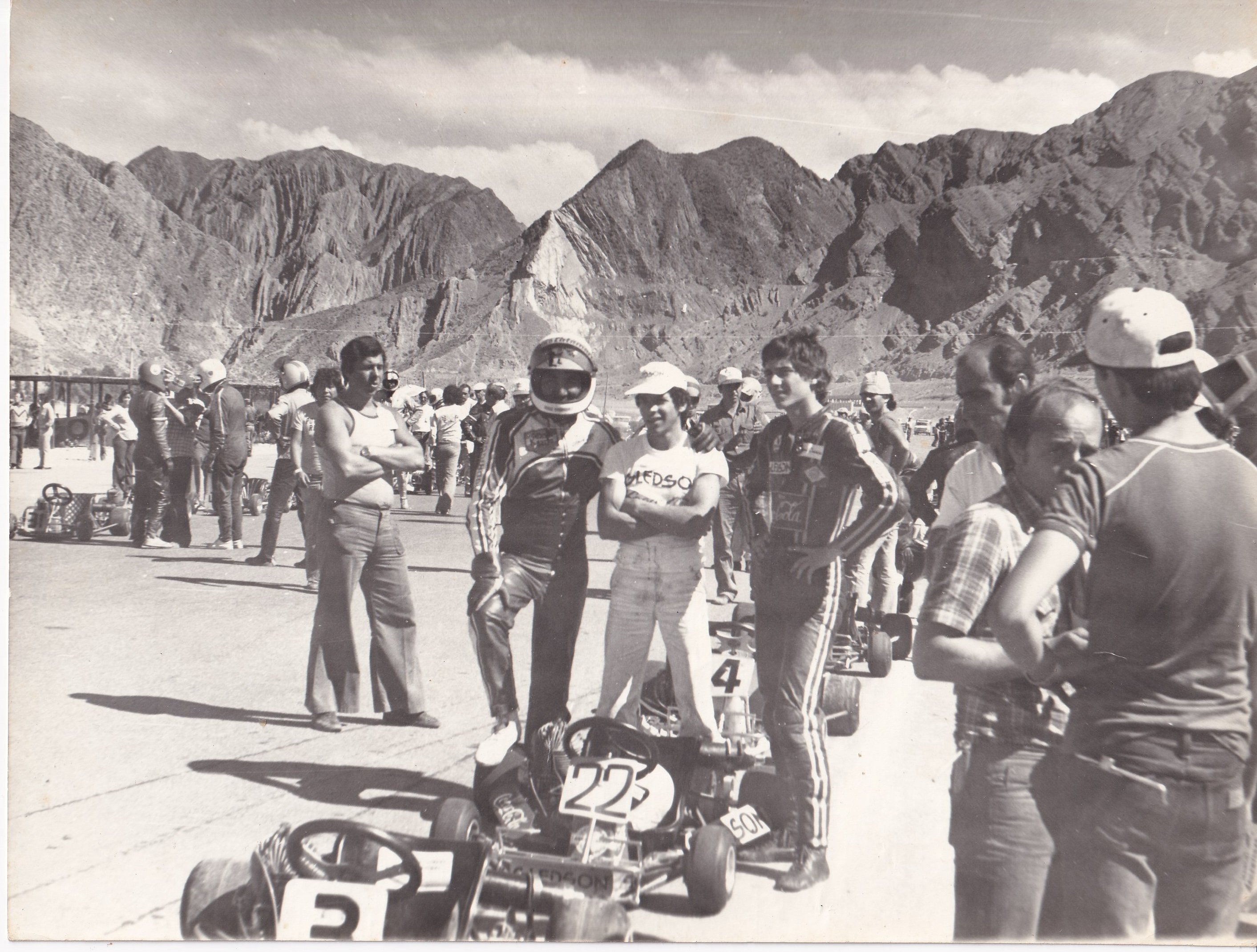
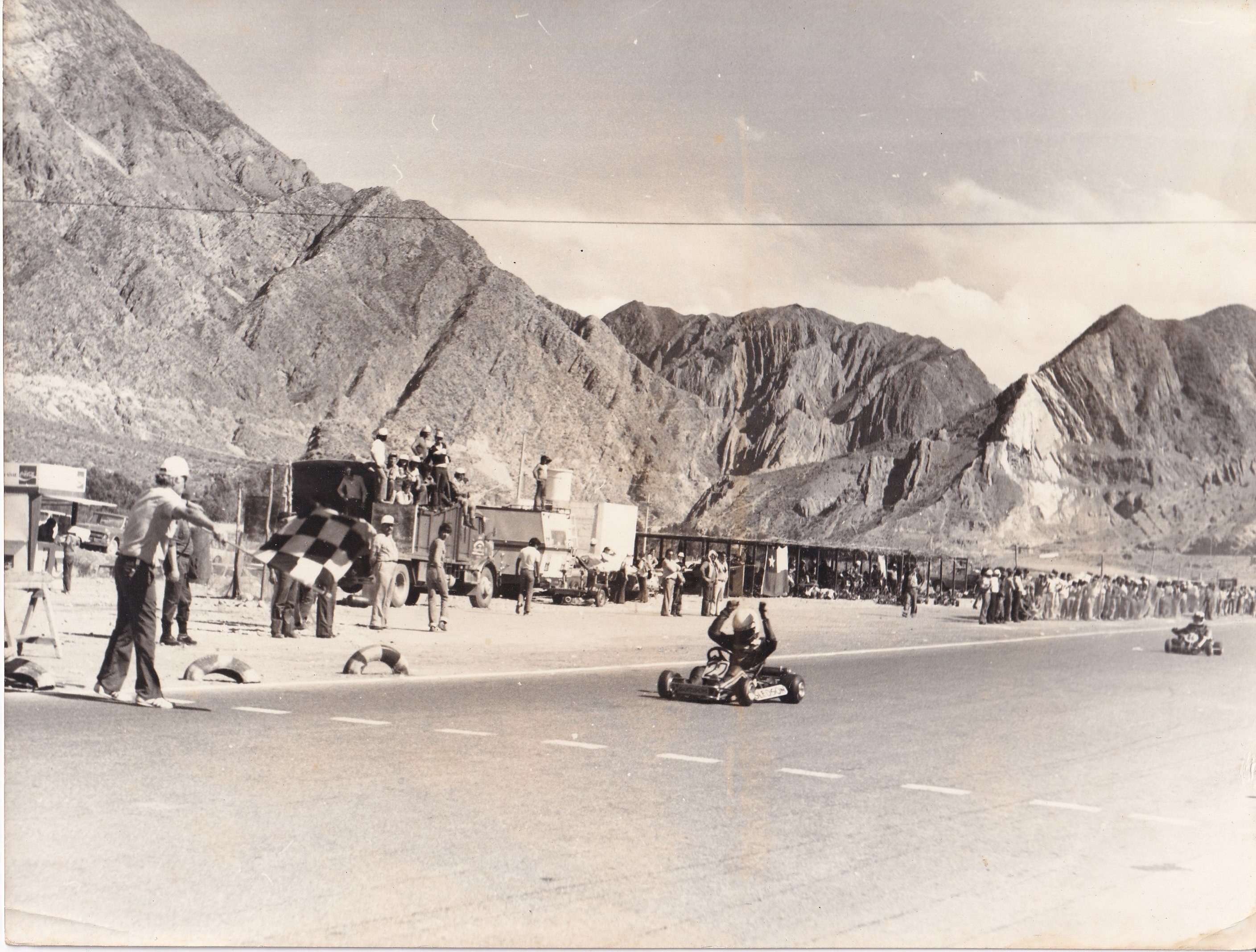
Four unpublished large-format black and white photos, Bolivia, 1979.
Reproduction is prohibited without prior authorization.
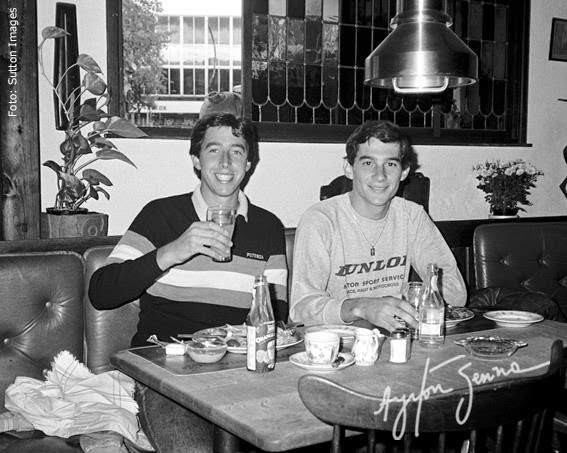
Fullerton, Senna’s toughest rival
In a 1993 press conference, Ayrton Senna famously named Terry Fullerton—not Prost or Mansell—as his toughest rival. Their intense yet respectful rivalry began in the late 1970s in European karting, where they raced as teammates for the DAP factory team. Fullerton’s speed and consistency deeply challenged the young Senna and helped shape his competitive spirit. In his 1979 letters, with Ayrton Senna autographs, Senna mentions Fullerton several times, highlighting his importance as both teammate and rival. Though Senna never won the world karting title, this early rivalry left a lasting mark—built on pure racing.

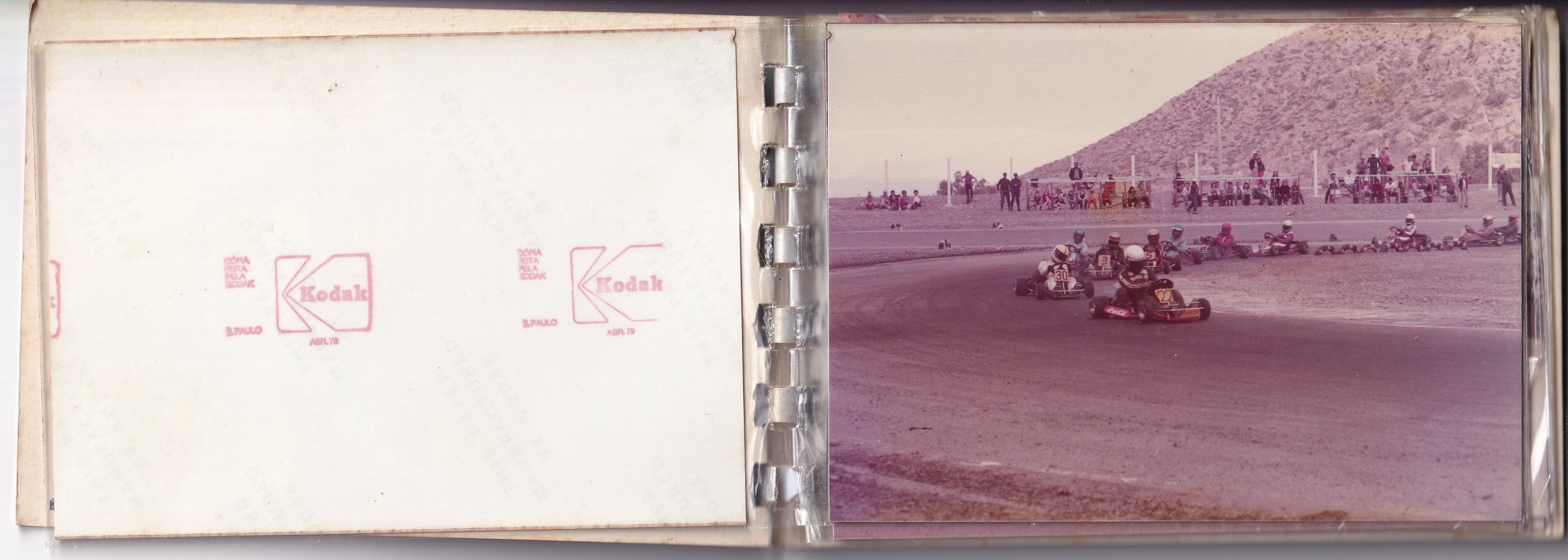
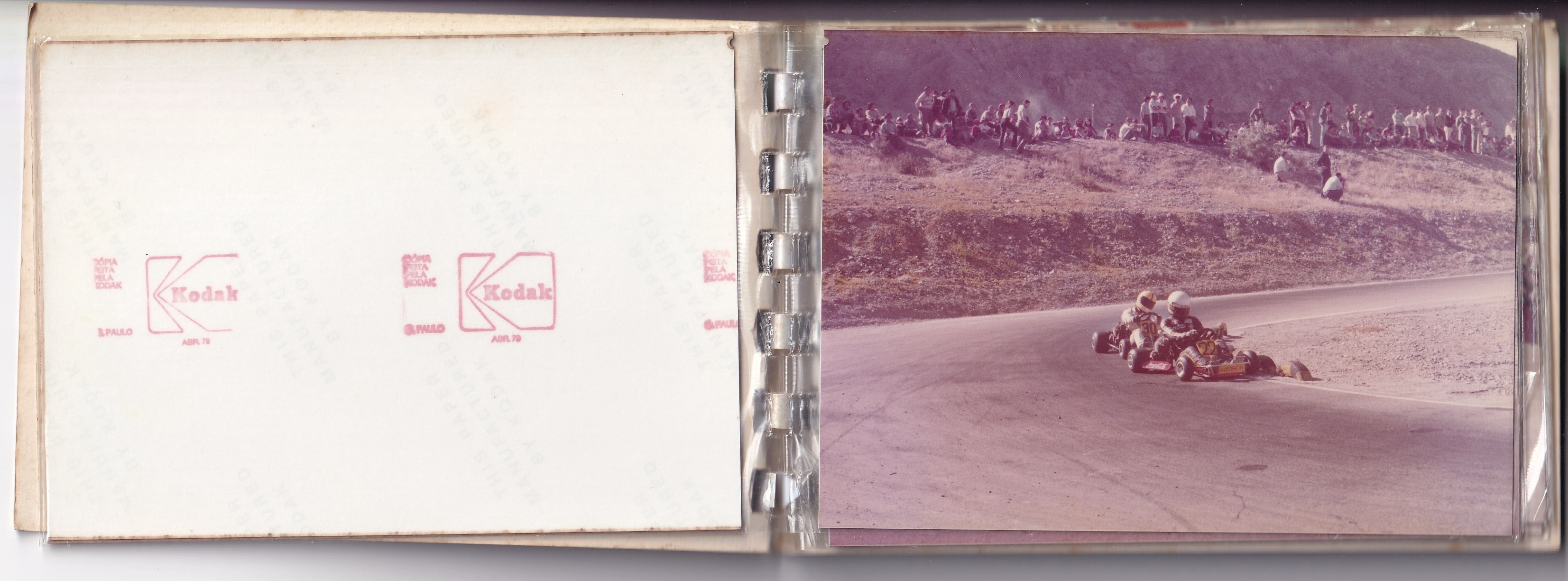

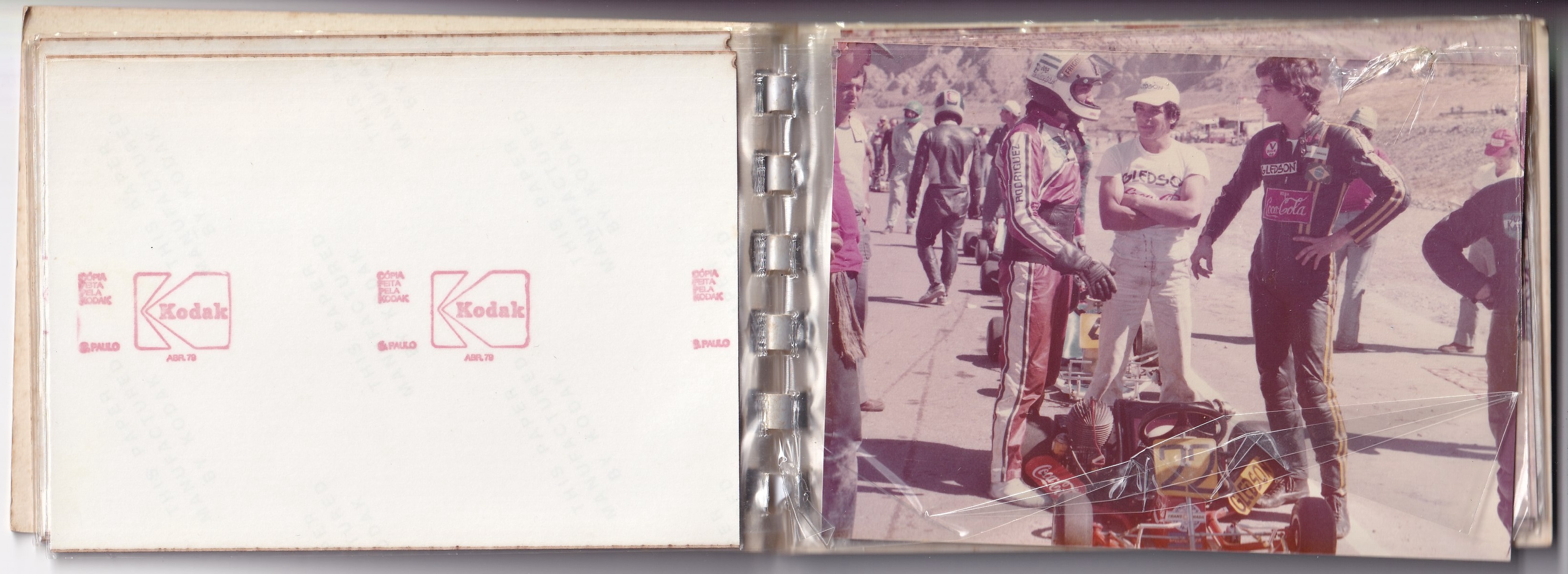
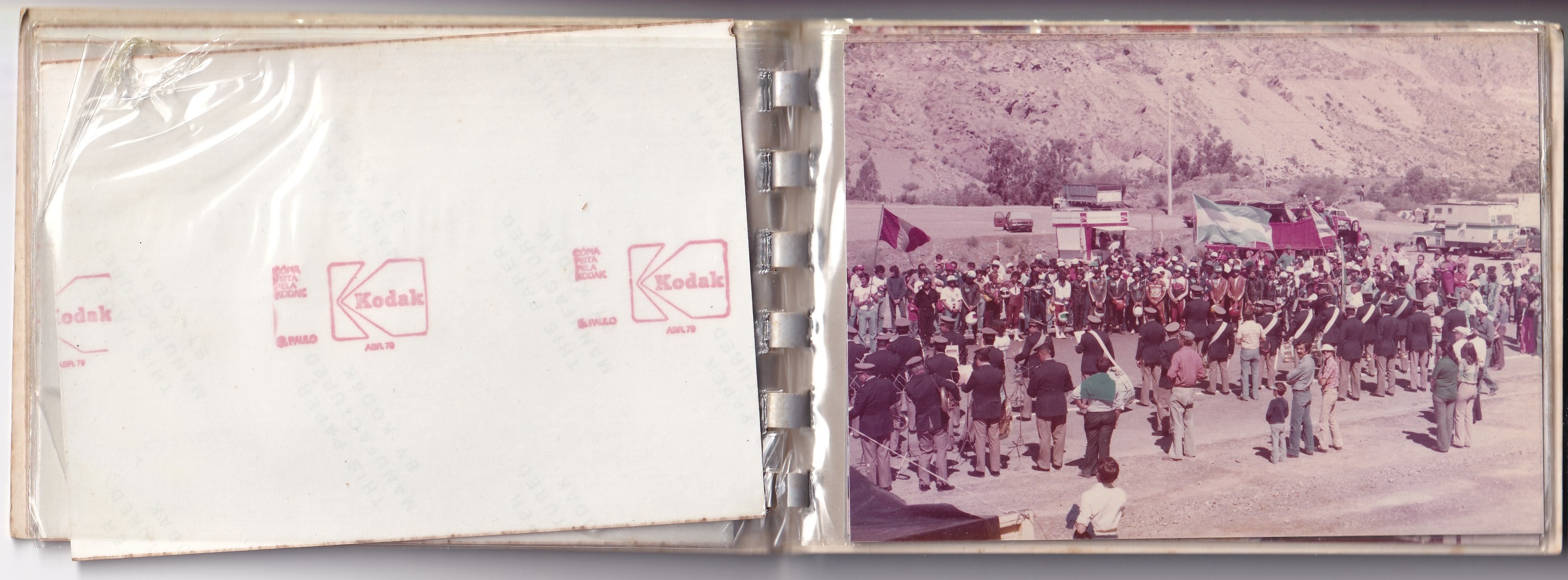
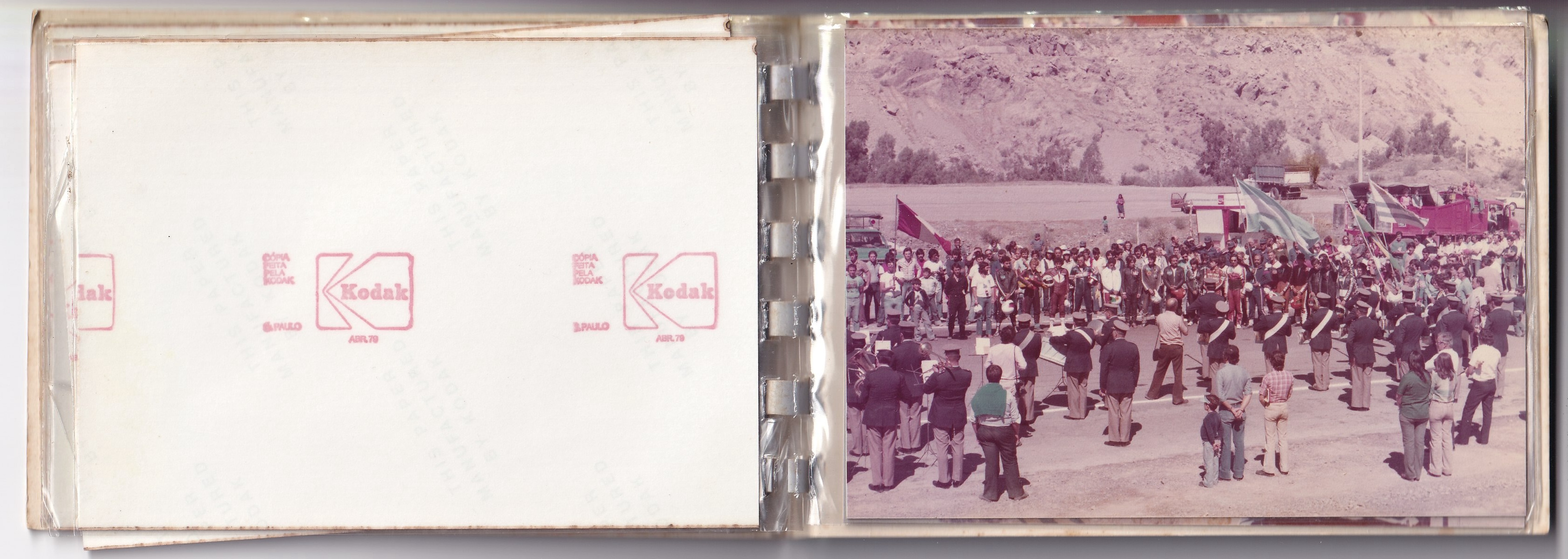
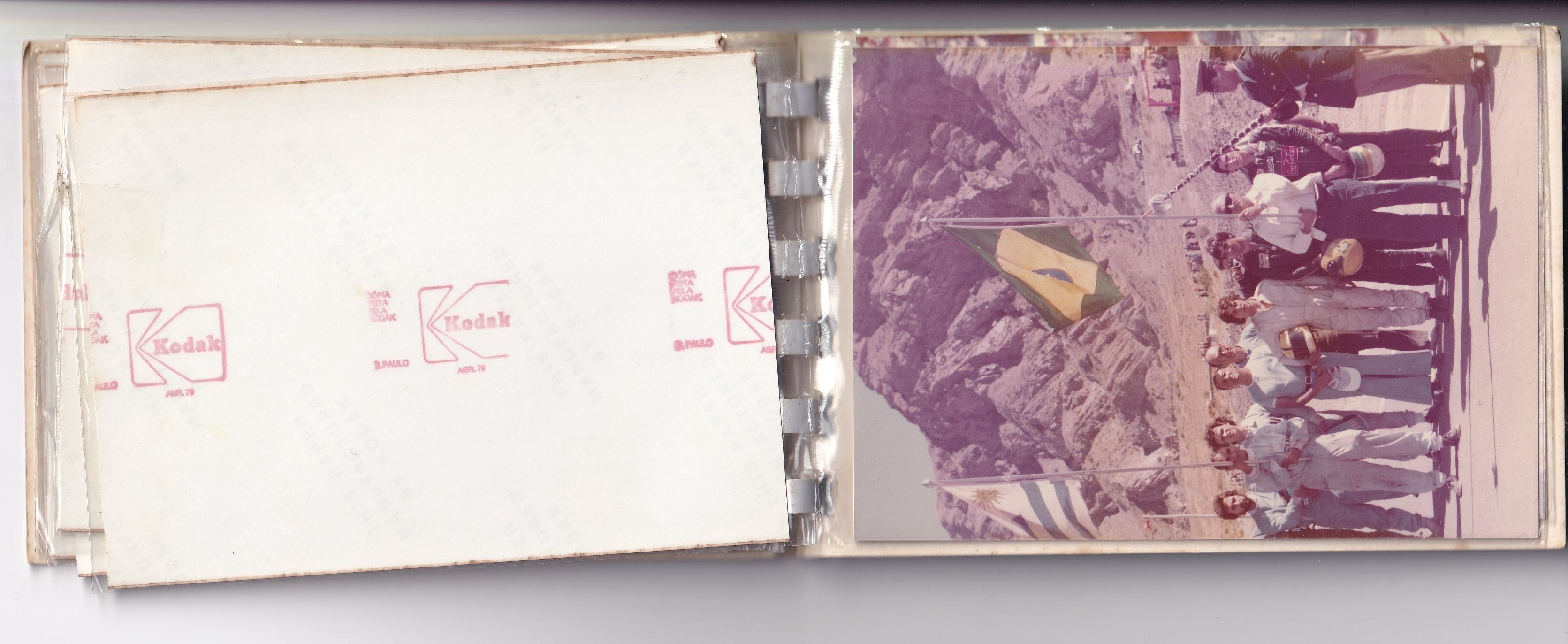

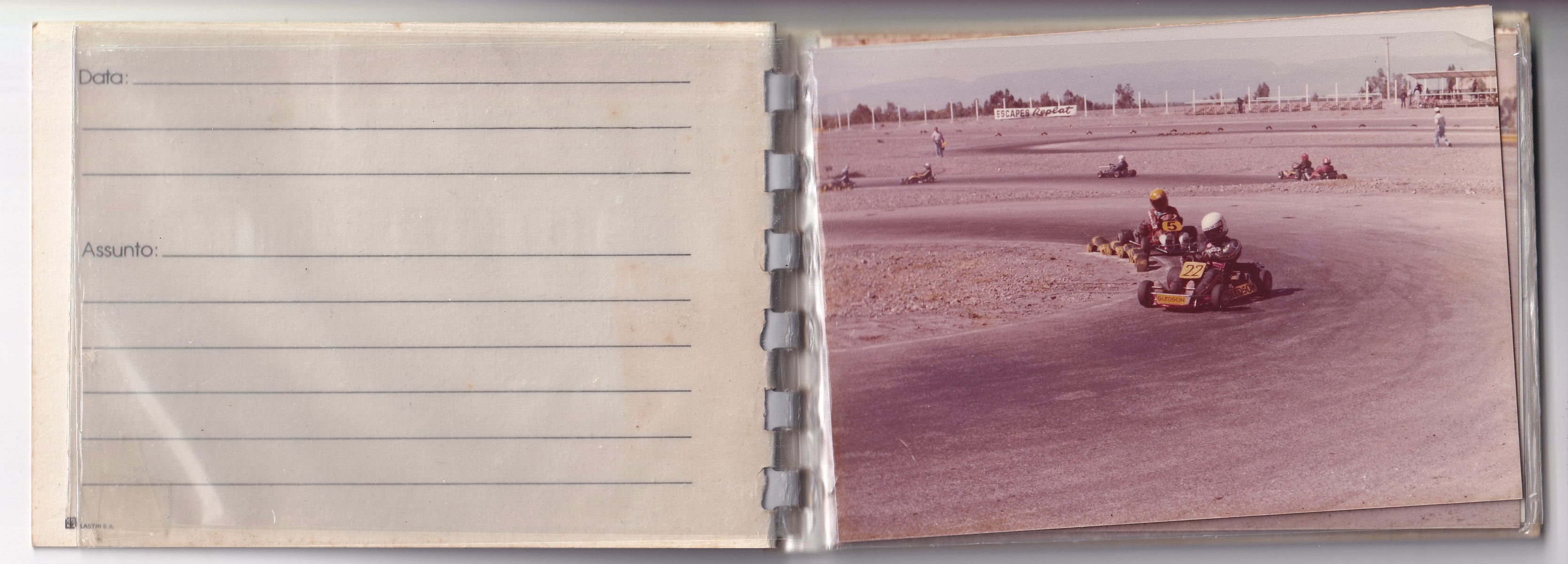
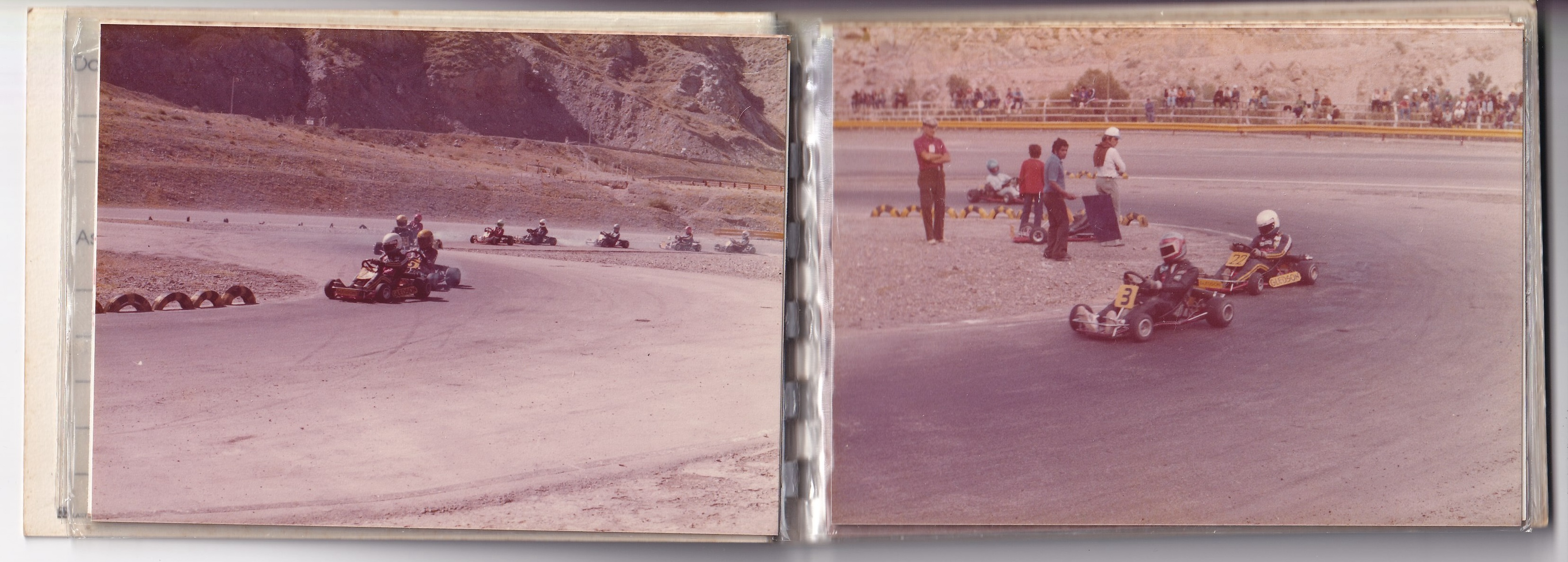
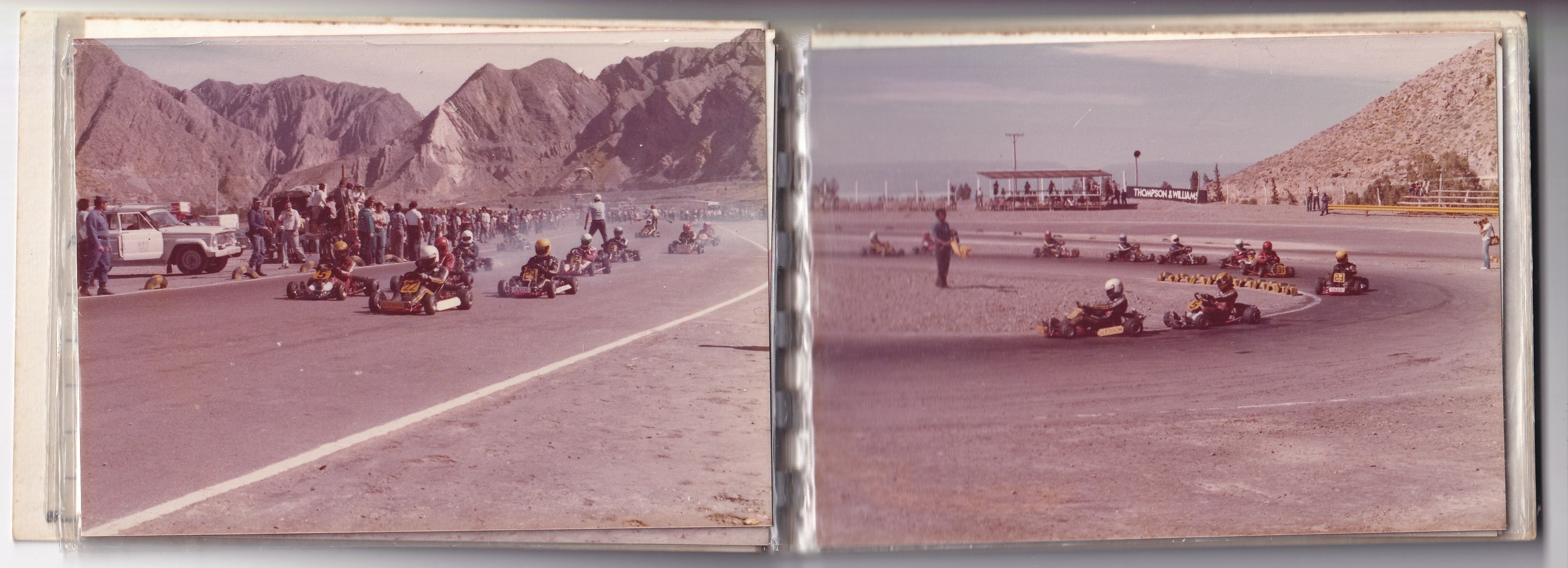
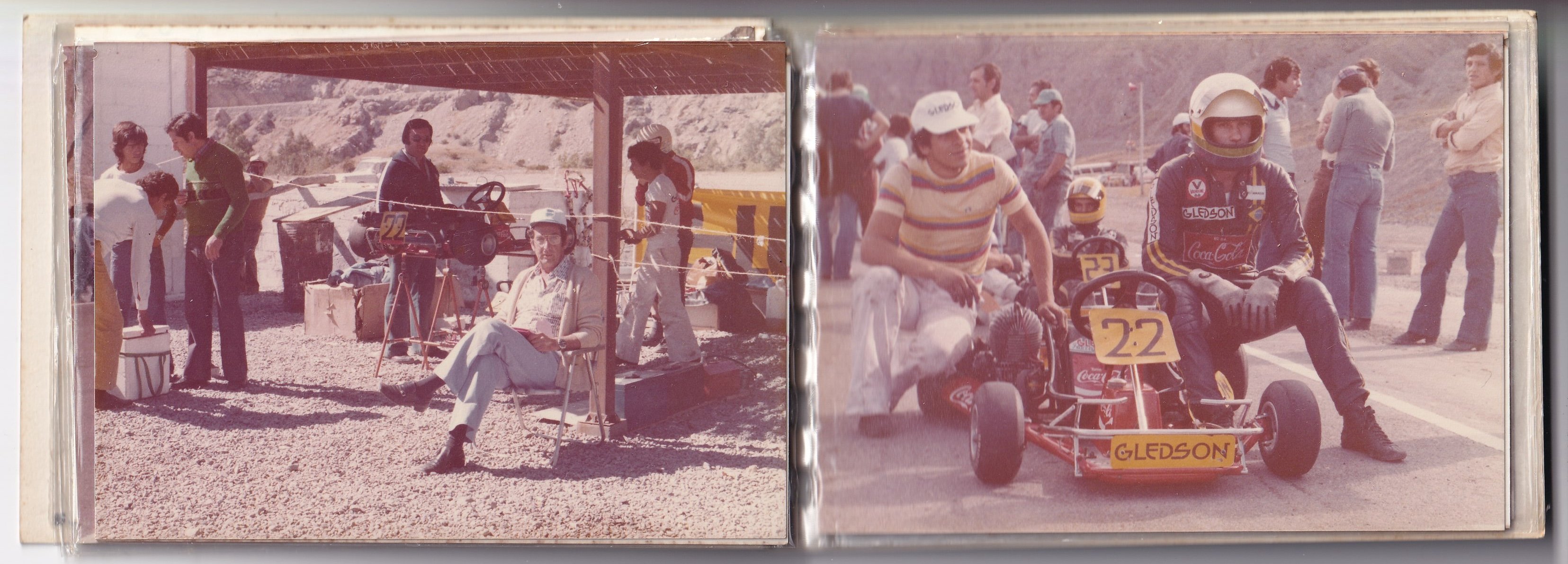
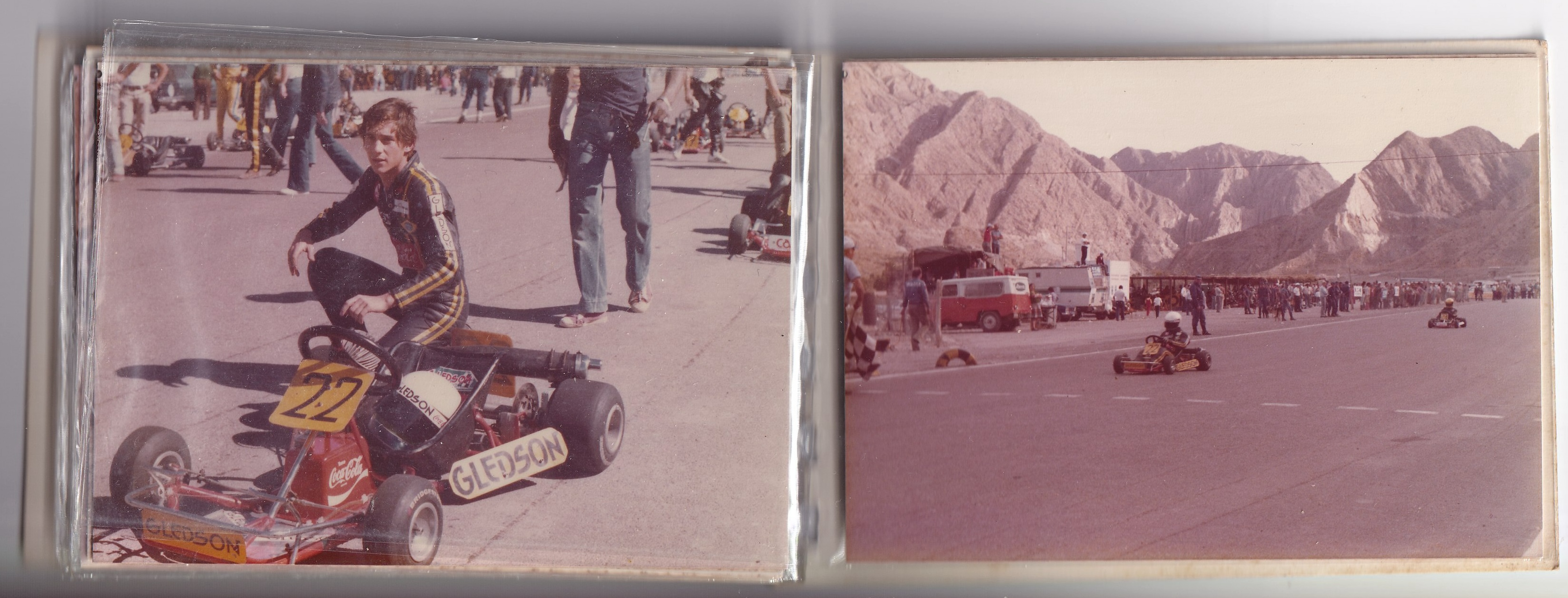
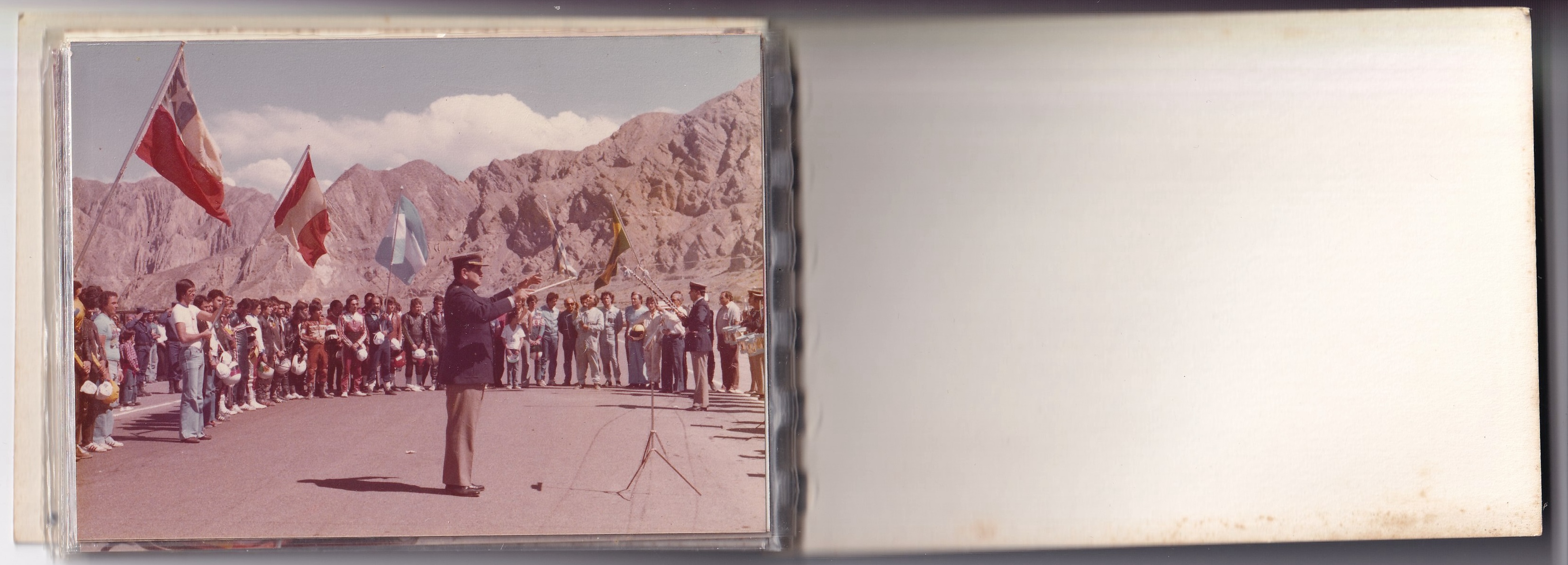
Two albums containing 19 unpublished standard-size color photos, Bolivia, 1979.
Reproduction is prohibited without prior authorization.
A friendship between two young brazilians passionate about racing
Ayrton Senna and Antonio were karting friends, and they were almost the same age. Antonio, also Brazilian, worked as a journalist for a Brazilian automotive magazine (Autoesporte). When Ayrton went to Europe, he sent these two letters to Antonio so he could write detailed and exclusive articles for Autoesporte. The two friends met several times in 1979, notably in Bolivia, where Antonio took these color and black-and-white photographs of Senna.
After the sudden passing of Antonio in 1982, his sister Glaucia kept these letters and photographs. Forty years passed, and she chose to pass on this collection. She got in touch with me, and we talked for hours before finally arranging a meeting at her home in Campinas (SP) where she kindly told me the story. It was a moment that was both pleasant and moving. They entrusted me with this exceptional collection of F1 memorabilia.
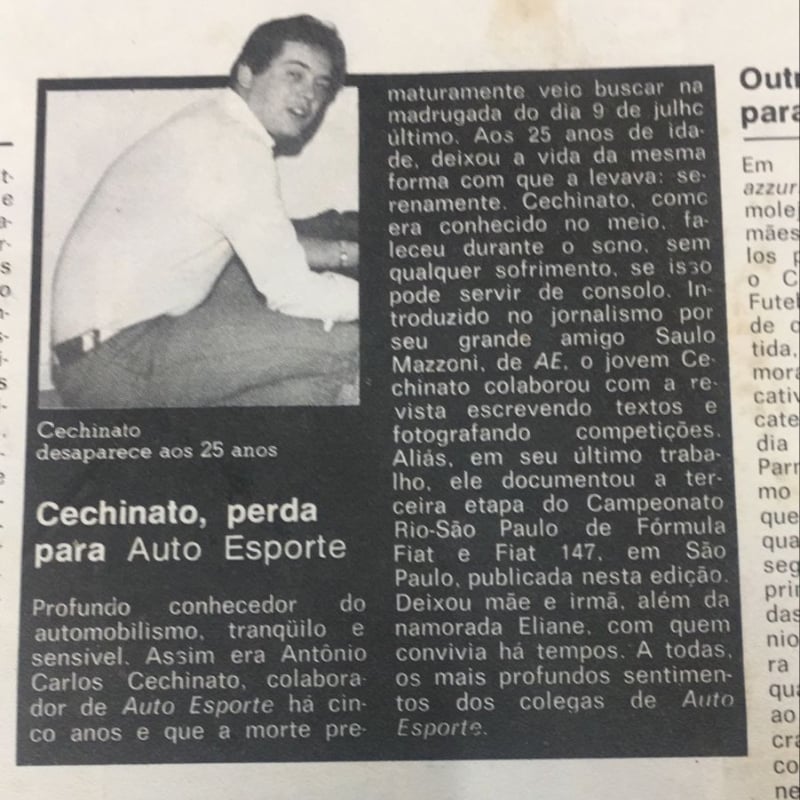
The Autosporte article paying tribute to Antonio.
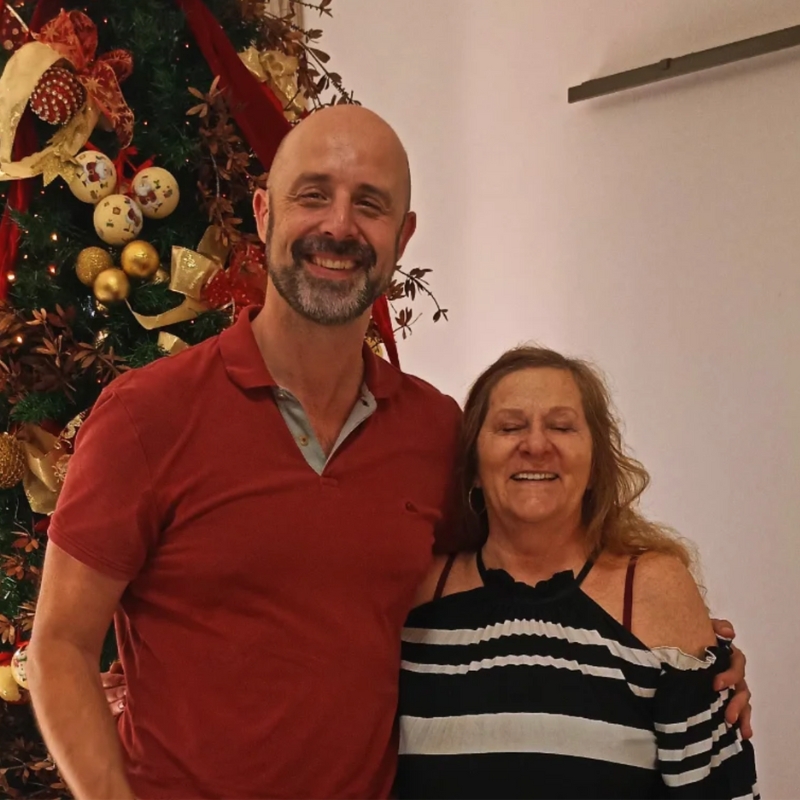
Mathias Meyer, autograph expert, and Glaucia, Antonio’s sister.
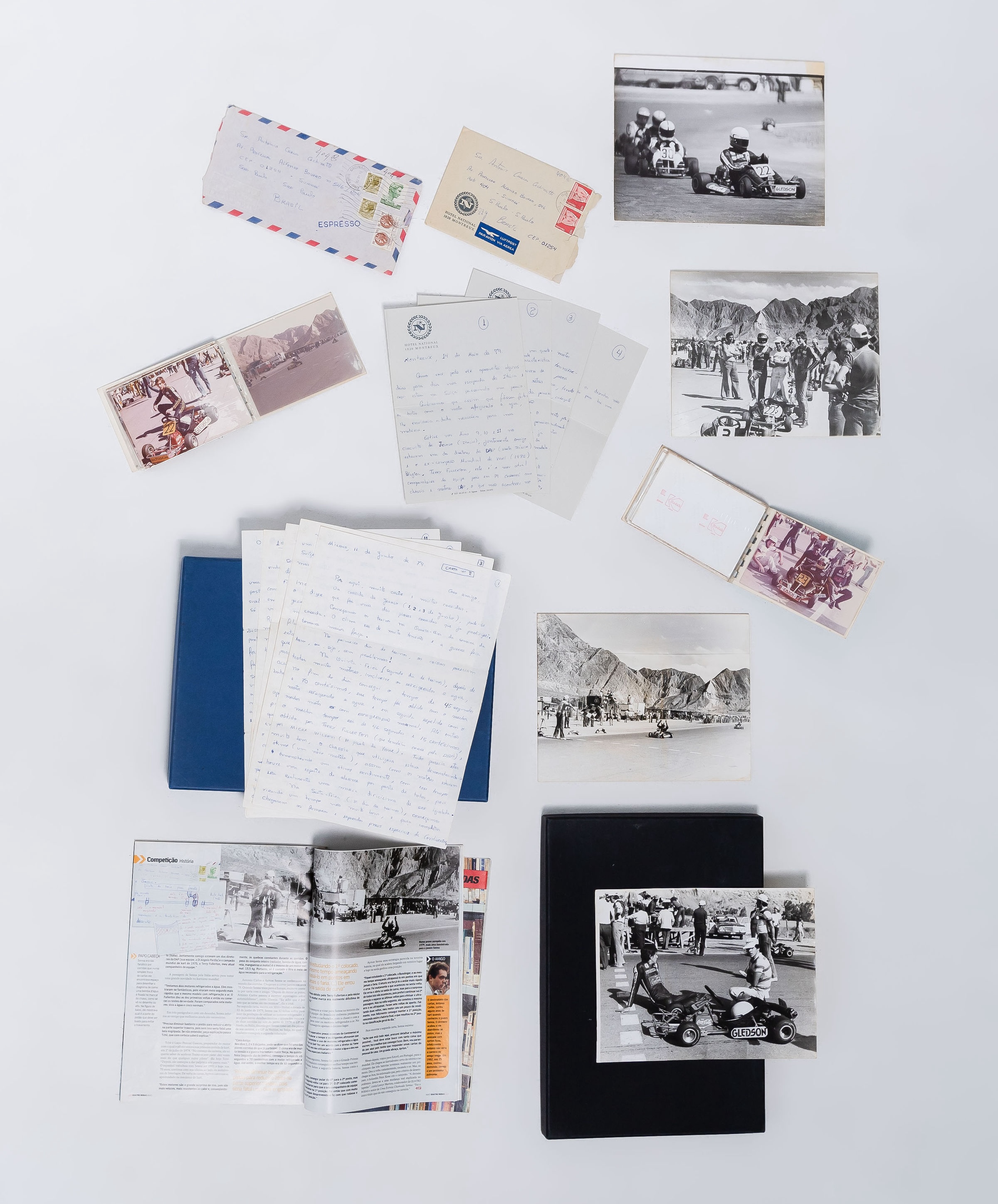
What’s in this Ayrton Senna memorabilia set
13-page letter, technical, including 2 drawings (Montreux, May 14, 1979)
12-page letter, focused on competition (Milan, June 11, 1979)
2 albums, 19 color photographs featuring Senna, 4,84” × 3,54” (Bolivia, 1979)
4 black and white photographs featuring Senna, 9,45” × 7,48” (Bolivia, 1979)
A once-in-a-lifetime opportunity
Rarity
Unique, unpublished, unobtainable
Content
Technical, strategic, personal
Moment
Early career, 1979, karting
Conservation
Perfect condition, no flaws
Provenance
Directly from the family of Senna’s close friend
This is a unique opportunity to acquire the most significant piece of F1 memorabilia and Ayrton Senna memorabilia.
This set will be auctioned at
Christie’s London on December 11, 2025
This is a unique opportunity to acquire the most significant piece of F1 and Senna memorabilia of its time.
There will be only one winner, one owner.
Becomingsenna.com is an independent website presenting historical memorabilia for autio. It is not affiliated with Ayrton Senna’s family, Instituto Ayrton Senna, or any official Formula 1 organization. All items are authentic and documented.
Want more information?
Fill out the form — we’ll be in touch soon!